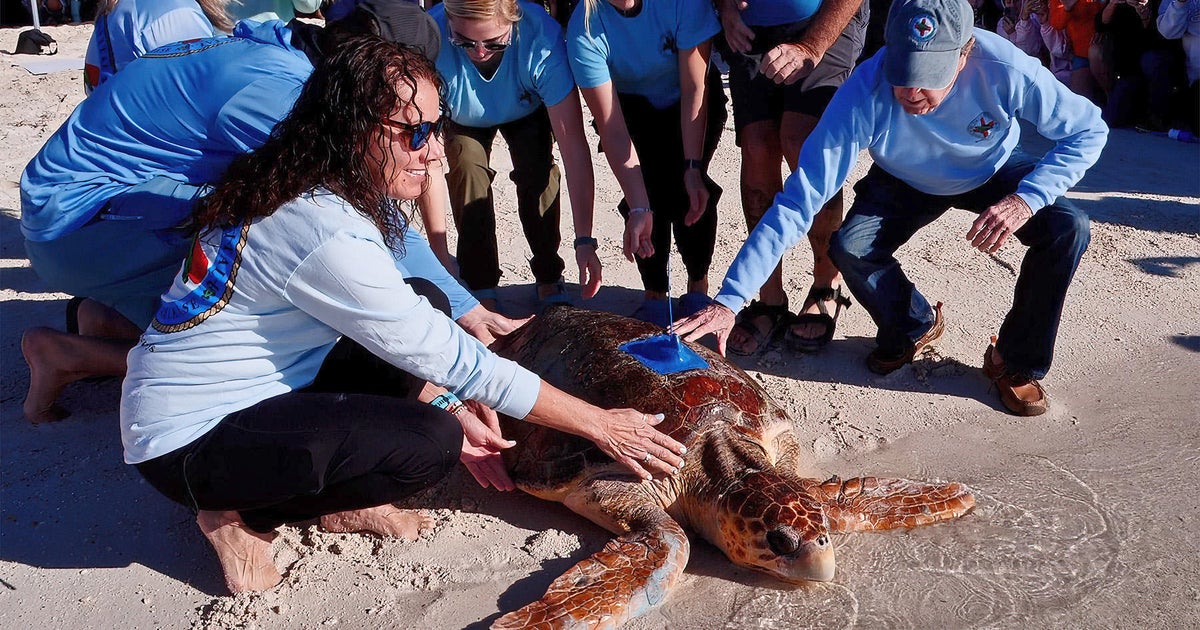Electrified Coral Reef Seeks To Boost Marine Conservation
LAUDERDALE-BY-THE-SEA (CBSMiami) — A solar-powered, electrified coral reef experiment aims to help marine conservation.
The bizarre experiment rests on the ocean floor off Lauderdale-by-the-Sea.
The South Florida Sun-Sentinel reports the electrified artificial reef went into operation in June, in an attempt to improve the biologically and economically critical coral reefs of southeast Florida. And early reports say oysters, algae and various fish species have established themselves among the electrified structures.
Lauderdale-by-the-Sea, a popular spot for diving from the beach since its reefs are close to shore, approved the project six years ago as an experimental way of enhancing its offshore assets.
The town contracted with the non-profit Global Coral Reef Alliance to cement a series of curved steel rods to the sea floor, creating six cage-like structures about six feet long and four feet high, shaped like airplane hangars. A mild electric current runs from solar panels to the steel rods, helping draw from the seawater dissolved calcium carbonate, the mineral from which corals form their skeletons.
The plan calls for attaching pieces of living coral broken off by storms and other natural causes to the steel bars, allowing the electric current to help them build their skeletons. A state permit to collect the corals is pending, so the full plan has not yet gone into action.
But on the first formal inspection, detailed in a July 23 report to the town, divers from the non-profit Vone Research Inc., which installed the structure, said they found abundant signs of life. A thin but growing layer of limestone has accumulated on the steel, with various forms of marine life collecting on it. Clumps of frond oysters attached themselves to the structure, with algae growing around them. Various fish species dart around the reef.
"It's definitely attracting fish," said Stephen Attis, president of Vone Research. "The structures are growing calcium carbonate. The amount of oysters on it and how fast they're growing is amazing. It's very promising."
Coral reefs, often called the rain forests of the ocean, support an enormous diversity of life, with communities of crustaceans, fish, sponges and other creatures making their homes in these vast undersea cities of calcium carbonate. From an economic perspective, they contribute billions to the South Florida economy in revenue from fishing, diving and snorkeling, studies have found.
Around the world coral reefs have suffered sharp declines from pollution, overfishing, ship groundings, global warming and the acidification of the ocean from increased carbon dioxide in the atmosphere. Although no one expects artificial reefs such as the one off Lauderdale-by-the-Sea to single-handedly save coral habitats, supporters hope they can be part of the solution.
Town spokesman Steve D'Oliveira said it was far too soon to assess the project's success.
"The reef only became fully operational recently," he said. "It's difficult to predict a time when we'll be able to say whether the project was successful. Artificial reefs need sufficient time to grow and develop. It doesn't happen overnight."
The town is paying the Global Coral Reef Alliance, based in Cambridge, Mass., $88,480 over several years to construct, monitor and maintain the reef.
The organization is headed by Thomas Goreau, who holds a doctorate from Harvard and developed the technique of using electric current to encourage coral growth. The patented process, called Biorock, has been used to build flourishing artificial reefs in the Maldives, Seychelles, Thailand, Indonesia, Papua New Guinea, Mexico and Panama.
The technique is controversial, however, and scientists disagree on whether it or not it has been proven to work.
"Not sure the Biorock is effective," said Richard Dodge, dean of the Nova Southeastern UniversityOceanographic Center and executive director of the National Coral Reef Institute. "I hope it is. Reefs need some help these days. It would be interesting to do a comparison study of coral settlement and growth on and off the Biorock."
Goreau referred questions to the town.
From the surface, only the buoys are visible, bobbing in the water south of Anglin's Pier. The reef is accessible to divers, situated in about 15 feet of water about 250 yards offshore, just south of the Datura Avenue beach access point.
If you do visit the reef, you shouldn't touch it. Not because the electric current will hurt you, because it won't, but to avoid damaging the reef.
The system itself took several tries to set up correctly. Waves flipped the buoys, forcing a redesign. And three times, vandals cut the wires on the solar panels, Attis said. But now that the reef is up and running, supporters say they are optimistic it will create a living reef.
"This is a really neat project and I believe it's going to work," Attis said. "We're already seeing growth, and once we transplant corals, it's really going to change. It should be exciting."
The South Florida Sun-Sentinel contributed to this report.



